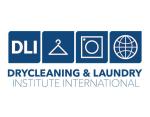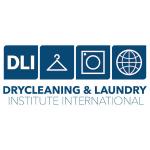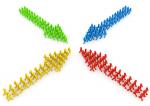CHICAGO — Marketing is a necessary evil in the minds of many dry cleaners, but if done correctly, marketing can go from a slot machine that pays dividends seeming at random and becomes a dependable income generator.
This was the central message of “Measure Your Marketing,” a webinar recently hosted by the Drycleaning & Laundry Institute (DLI) and led by David Coyle, industry marketing coach of Maverick Drycleaners and owner of In The Bag Cleaners in Wichita, Kansas. In Part 1 of this series, we examined some of the questions dry cleaners should ask themselves when it comes to their marketing, and in Part 2, we looked at the pieces and mindset that drive successful marketing efforts. Today, we continue our series by looking at the area where a dry cleaner can find his or her best customers, along with ways to keep them coming back.
Traffic Sources
From a marketing perspective, you have three different traffic sources. The first one is direct traffic sources.
“These might be things like doing a Google ad, or if you send a handwritten note to someone or if you send a postcard out for new clients coming into the business,” Coyle says. “This is what I consider standard marketing.”
Coyle says the next source is indirect traffic, which comes from affiliate relationships or joint ventures.
“An affiliate relationship is if you go to the clothing store, and say, ‘Look, every time you sell a dryclean-only piece of clothing, give someone this certificate,’ and if they show the receipt and the certificate, they will get that item cleaned for free the first time they bring it into you.”
Coyle has found examples of dry cleaners going outside of the clothing industry to make this work as well.
“I've got a friend who, every time a Louis Vuitton purse is sold at a high-end mall out on the West Coast, actually gives a $200 gift card that's put into that purse for his cleaners,” he says. “They've created an affiliate relationship, because he knows that's the ideal target client for his business.”
Coyle’s third traffic source is through referrals. He says there are five steps of the client journey at your company to focus on to create a thriving referral process:
- Attract — The first step is to get the customer’s attention. “Even though we're familiar with our business, not everyone is,” Coyle says. “You've heard that person say, ‘I've driven by your place a million times, and I never noticed you are there.’ Well, we've been there for 10 years. People have blinders on. They're busy. So, we need to attract them. We want to let them know that we exist.”
- Acquire — In this step, the new client breaks the seal and uses the cleaner’s services. “This means we want them to become a paying client,” Coyle says. “We want them to spend their first dollar with us and feel appreciated.”
- Appreciate — Coyle believes in giving new clients welcome gifts, such as personalized VIP bags. “It's one of the main things that we do to show people appreciation,” he says, “and make sure that they know that they feel important, they feel appreciated, and they feel included in what we're doing.”
- Ascend — In this step, the customer is starting to appreciate what a drycleaning business can add to his or her life. “We want them to use all the services we have to offer,” Coyle says.
- Ambassadors — In this ultimate step, the customer is not only using all the cleaner’s services but is telling their friends. “We want them to be ambassadors of the business and become raving fans,” Coyle says.
When these five steps are taken, he says, a cleaner has a better opportunity to retain that client over the long term. To accomplish this, cleaners need to have the proper mindset.
“Most people want to make a profit on the front end of this process — the Attract and Acquire steps,” Coyle says. “I'm going to encourage you to not think of it that way. I want you to think of the front end as being a breakeven situation where what you spend to attract and acquire clients is canceled out by the sales that come from those efforts. Instead, all of your profit is actually made on the next three steps, or at the back end of the process.”
The key, Coyle says, is making sure the middle step — Appreciation — becomes robust in your process. Making people feel good about their purchase, rather than have regrets, ushers them through the journey to the back end.
“They think, ‘I just spent money, but you know what, I feel so good about it,’” Coyle says, “‘because they appreciate me. They gave me a welcome gift. They use my name. They had plenty of time to spend with me and answer all my questions. I went home with a great deal off of the second order that I'm going to bring in.’ So, if your appreciation is robust, you will then stick that sale, and you’ll be able to take them from the front end over to the back end, which is where all the profits are made.”
Come back Tuesday for the conclusion of this series, where we’ll dive into how to best measure your marketing efforts. For Part 1 of this series, click HERE. For Part 2, click HERE.
Have a question or comment? E-mail our editor Dave Davis at [email protected].




















































































































